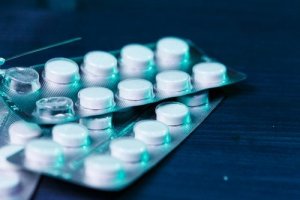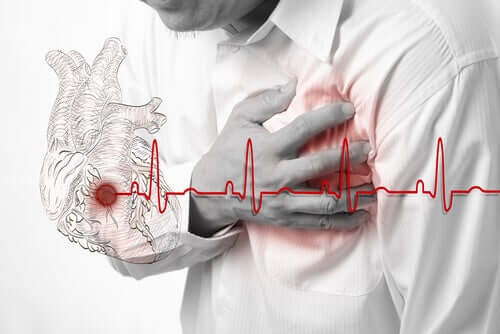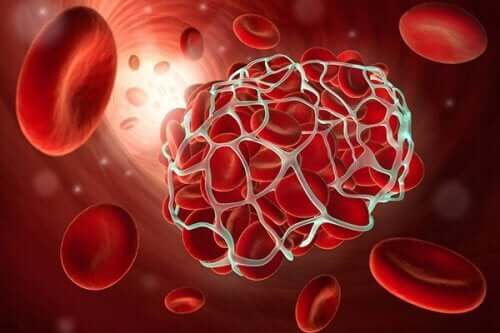Low-Dose Aspirin: General Information and Usage

Low-dose aspirin is the household name of the active substance acetylsalicylic acid. Therefore, low-dose aspirin is essentially the same as regular-dose aspirin, but at a lower dose (100 or 300 mg). The regular-dose version of this anti-inflammatory and analgesic contains 500 mg of acetylsalicylic acid.
A little about aspirin
During most of the twentieth century, acetylsalicylic acid was used as an analgesic and anti-inflammatory. However, since 1980, sufferers of heart problems have been able to take advantage of the antiplatelet action of aspirin. As a result, medical professionals have increasingly used this medication for just this purpose.
Aspirin is very useful for patients who have suffered their first coronary or cerebrovascular ischemic event of a heart attack. This is because low-dose aspirin can inhibit platelet function. Platelets are molecules that, along with other components, contribute to the formation of blood clots. Therefore, platelets are partially responsible for the development of coronary heart disease.
Most recently, studies have shown that long-term treatment (more than 10 years) with acetylsalicylic acid can significantly reduce the risk of colon cancer. The cancer cell growth-inhibiting properties of this active substance are already known.
For several years, low-dose aspirin has been one of the best selling drugs in many countries because of its many medical uses. This has even led to a lack of supply in some countries.
You might like: Use Aspirin to Whiten Clothes and Remove Stains
Why do heart attacks happen?

Acute myocardial infarction, or heart attack, is a serious condition that occurs as a result of the obstruction of a coronary artery by a blood clot. In other words, the blood circulation that is supposed to reach the heart becomes blocked by a plug formed by different substances.
As a result, the plug interrupts the normal passage of blood and it does not reach the heart in quantities necessary for proper function. Unfortunately, this type of event can lead to death. This same situation can occur with the arteries and veins that supply the brain, which is called cerebrovascular infarction, or stroke.
Heart attacks are unexpected and can happen to anyone and at any time. However, they’re noticeably more frequent in those with risk factors and in patients who have already suffered from another similar issue.
The most characteristic symptoms of a heart attack are:
- Chest pain for more than 20 minutes.
- Fatigue.
- Cold sweat.
- Dizziness.
- Anxiety.
It’s essential that the person suffering from myocardial infarction arrives at the hospital as soon as possible and receives medical attention within an hour of the onset of symptoms.
When a person has to suffer through a situation like this, his or her doctor usually prescribes treatment with low-dose aspirin to help prevent it from happening again. Essentially, this medication helps to make the blood more liquid, preventing these clots from forming and triggering heart attacks.
How does low-dose aspirin affect the body?

Acetylsalicylic acid interferes with the synthesis of prostaglandins: in other words, it irreversibly inhibits cyclooxygenase. This enzyme exists in two different forms, cyclooxygenase 1 (COX-1) and cyclooxygenase 2 (COX-2). The latter is only in the brain, while COX-1 exists in almost all bodily tissues.
Low-dose aspirin works on the COX-1 of platelets, which generate thromboxane A2, a substance that produces strong vasoconstriction. These effects occur at much lower doses than those required for anti-inflammatory and analgesic action. For this reason, the doses of acetylsalicylic acid in low-dose aspirin are either 100 or 300 mg, instead of 500 mg in regular-dose aspirin.
The COXx-1 of platelets is more sensitive than the COX-1 of the endothelium. Therefore, this explains the need for very low doses of acetylsalicylic acid to achieve an antithrombotic effect. By inhibiting this enzyme, the medication decreases platelet activation while simultaneously increasing bleeding time.
This medication does not affect thrombin-induced platelet activation. However, doctors still recommend that patients who have suffered from coronary heart disease and angina pectoris (stable angina) take it.
You might like: The Incredible Power of Aspirin
Conclusion
Low-dose aspirin is a widely used drug for the prevention of myocardial and cerebrovascular infarction (heart attack and stroke). It contains acetylsalicylic acid in different doses, from 100 mg or 300 mg.
You should always follow the doctor’s instructions and not change the dose. This medicine, like all others, can have unwanted side effects. Also, if you don’t properly follow the therapeutic guidelines, the drug may not work as well. As a result, you could increase your chances of having another heart attack.
Consult a professional if you have any questions about this medication and usages.
All cited sources were thoroughly reviewed by our team to ensure their quality, reliability, currency, and validity. The bibliography of this article was considered reliable and of academic or scientific accuracy.
- Rohlfs, I., García, M. del M., Gavaldà, L., Medrano, M. J., Juvinyà, D., Baltasar, A., … Muñoz, D. (2004). Género y cardiopatía isquémica. Gaceta Sanitaria. https://doi.org/10.1157/13061995
- Agustí, A., & Diogène, E. (2004). Prevención primaria del infarto de miocardio con ácido, acetilsalicílico. Medicina Clinica. https://doi.org/10.1157/13060895
- Vianna, C. A., González, D. A., & Matijasevich, A. (2012). utilização de ácido acetilsalicílico (AAS) na prevenção de doenças cardiovasculares: Um estudo de base populacional. Cadernos de Saude Publica. https://doi.org/10.1590/S0102-311X2012000600011
This text is provided for informational purposes only and does not replace consultation with a professional. If in doubt, consult your specialist.








